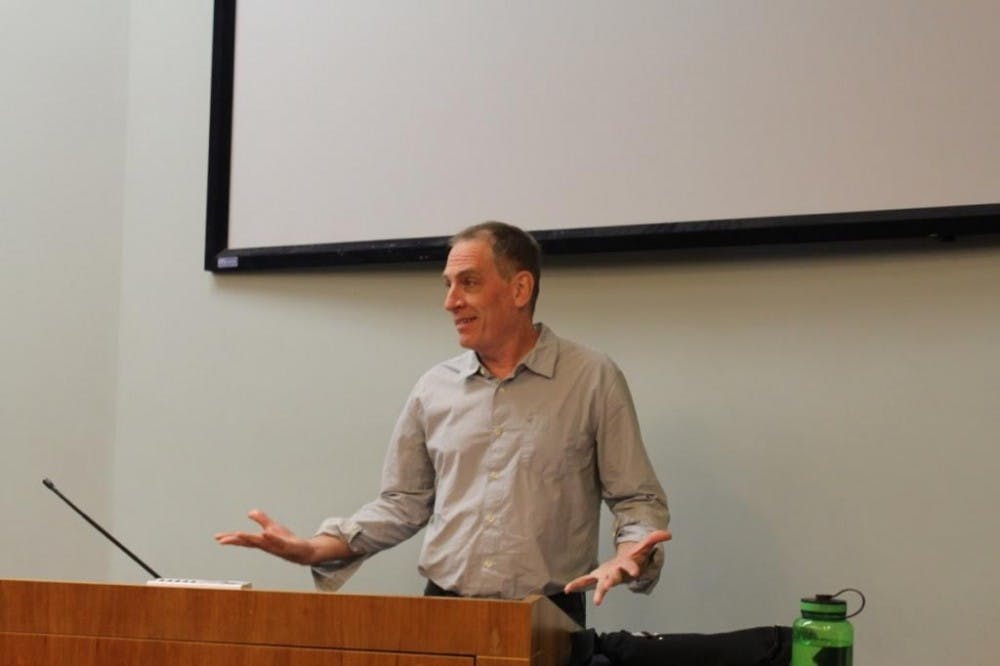Kyle Cunningham hadn’t intended to delve so deeply into genetics. In fact when he first came to Hopkins as an undergraduate, he was studying computers and philosophy.
However, like many students who decide to switch majors once coming to college, he discovered that computers and philosophy just weren’t for him.
Cunningham found himself falling back into biology, a subject he had always found interesting after a high school biology course. Even so, genetics was not his primary focus — Cunningham felt it was his weakest area. But that is exactly why he chose to study it.
“I had to correct that weakness,” Cunningham said. “In life, you have to face your demons. You look inside yourself, and what are you scared of? What do you not want to do? And that’s probably what you should do.”
This approach paid off for him. Today as a professor at Hopkins, Cunningham teaches genetics and uses genetic techniques to study calcium networks in yeast.
Cunningham’s journey into studying calcium and yeast started during his time as a postdoctoral researcher, when his initial focus was on the fusing of cells during mating. He knew calcium played a large role in mating, so he set out to study the effects of calcium during mating in yeast.
Before he could do this, he had to understand more about calcium, which meant studying the element through experiments. The results of these experiments proved too interesting, and they led him away from cell mating and into calcium networks.
Cunningham ended up finding calcineurin in yeast, a compound that regulates calcium transporters that is also found in humans.
Calcineurin helps to activate the immune system, and it is the protein targeted by immunosuppressants. Immunosuppressants are generally used during organ transplants to stop the body from rejecting the foreign tissue. These immunosuppressants appeared to work the same way on calcineurin in yeast, which Cunningham found to be surprising.
“[Immunosuppressants] act on calcineurin in humans, in the immune system, [and] they act on calcineurin in yeast. It’s shocking that the drugs would work across all the species in between,” he said.
This indicates that calcineurin was first present in organisms eons ago and has remained vital in organisms until today. It is present in many fungi, and it seems to be important to certain processes that lead to cell death.
Cunningham explained that one of his research students decided to remove calcineurin from fungi and got surprising results. When left alone the fungi survived, but when exposed to antifungals and antibacterials that it could normally resist, it died.
This led the research team to believe that fungi use calcium pathways involving calcineurin to defend themselves against attacks from antifungals and antibiotics. Without calcineurin, the fungi experienced a specific type of cell death that Cunningham is currently studying.
This type of cell death involves the rupture of lysosomes. Lysosomes are essentially the landfill of a cell, where all the harmful waste is stored. When the lysosomes rupture, the toxic material is poured into the cytoplasm of the cell, effectively killing that cell.
Cunningham hypothesizes that this type of cell death may also be present in humans, alongside the well-known cell death of apoptosis. It may be involved in human diseases, such as neurodegenerative diseases.
Cunningham believes that if scientists can understand and harness this new type of cell death, they may even be able to use it as a weapon against cancer cells.
Cunningham explained that facing his aversion to genetics was not his only motivation to become a researcher.
He talked about his excitement in making discoveries.
“If I had lived 500 years ago, I know I would be on those boats, searching the globe for new lands and new peoples,” Cunningham said. “My research experience [as an undergraduate] just woke that up in me, and I have been running with it ever since.”
Cunningham spoke about how he found the perfect environment for discovery as a professor at Hopkins, a position he never expected to have.
“What I didn’t expect was... how much I learned, not only from the material that I was teaching, but from my own students, who also ask questions that make me question things and make me do research to understand it,” Cunningham said.
He emphasized the role students play in his discoveries.
“[The students] are the ones who make the biggest discoveries as well, sometimes by accident, sometimes by error,” he said. “Every one of my students teaches me something I didn’t know.”
For example, Cunningham said that one of his students introduced him to transposons, a type of genetic material that is integral to his research today.
On a long road of battling demons and making new scientific findings, Cunningham has seemed to settle into an environment that fuels his excitement for learning.
“I want to discover new things that stand forever because they add to our human knowledge,” Cunningham said. “And that’s what thrills me.”























Please note All comments are eligible for publication in The News-Letter.